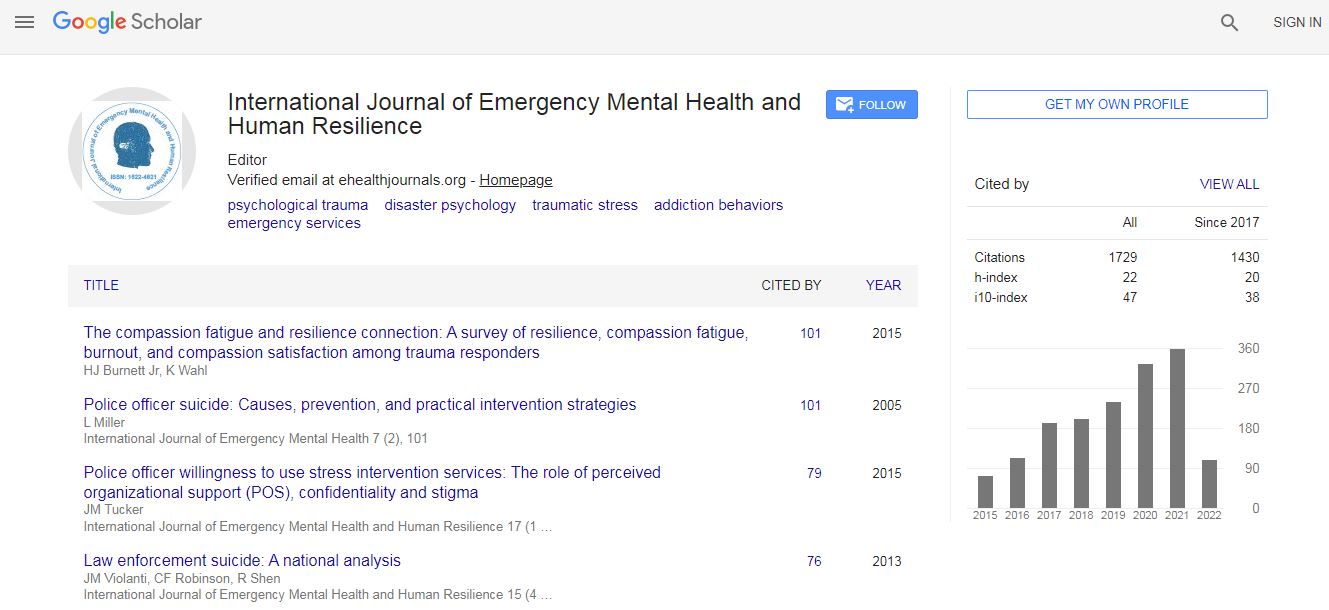Our Group organises 3000+ Global Conferenceseries Events every year across USA, Europe & Asia with support from 1000 more scientific Societies and Publishes 700+ Open Access Journals which contains over 50000 eminent personalities, reputed scientists as editorial board members.
Open Access Journals gaining more Readers and Citations
700 Journals and 15,000,000 Readers Each Journal is getting 25,000+ Readers
Google Scholar citation report
Citations : 4948
Indexed In
- Index Copernicus
- Google Scholar
- CiteFactor
- Publons
- Pubmed
- science Gate
- scispace
- world cat
Useful Links
Related Subjects
Share This Page
Is there a role of inferior frontal cortex in motor timing? A study of paced finger tapping in patients with non-fluent Aphasia
4th Annual Congress on Mental Health
Chrysanthi Andronoglou
University of Essex, Greece
ScientificTracks Abstracts: Int J Emerg Ment Health
Abstract
Statement of the Problem: Time processing is of fundamental importance for human behaviour. In an everchanging, dynamic environment, actions like dancing, driving or speaking are characterised by certain speed, sequence of events and time intervals. Timing and rhythmic relations are also core aspects of normal speechBroca’s area does not seem to be involved exclusively in language and motor speech. The purpose of the study was to investigate the deficits in timing reproduction in individuals with non-fluent aphasia (Broca’s patients) after a left hemisphere lesion including the inferior frontal gyrus, in which Broca’s region is traditionally localized. Methodology: Eighteen stroke patients with non-fluent aphasia and twenty-two healthy controls were recruited. We used the Finger Tapping Test, which consisted of the synchronization and the continuation phase with three fixed intervals (450msec, 650msec& 850msec). Participants firstly had to tap simultaneously with the device’s auditory stimuli (clips) (synchronization phase) and then continue their tapping at the same pace when the stimuli were absent (continuation phase). Findings: Patients with aphasia demonstrated less accuracy and greater variability during reproduction in both phases, compared to healthy participants. More specifically, in the continuation phase, individuals with aphasia reproduced longer intervals than the targets, whereas healthy participants displayed accelerated responses. Moreover, patients’ timing variability was greater in the absence of the auditory stimuli. Conclusion & Significance: This could be possibly attributed to deficient mental representation of intervals and not in motor difficulties (due to left hemisphere stroke) kas the two groups did not differ in tapping reproduction with either hand. Given that previous findings suggest a potential link between IFG, timing and working memory, we argue that patients' extra-linguistic cognitive impairments should be accounted for, as possibly contributing factors to timing disturbancesBiography
Chrysanthi Andronoglou is a clinician and a lecturer for over 25 years and has dedicated her studies, teaching and research in Developmental and Clinical Neuropsychology. Her experimental research is intended to shed more light especially in the higher cognitive functions of language and memory throughout lifespan. Hence, her first research interest was on these two faculties in children with Klinefelter’s syndrome as part of her postgraduate studies at the University of Essex aiming at the support and mental evaluation of this population. In her most recent research with her colleagues in the Medical School of Athens the aim was focused on the most popular area for language referring to the whole region of the Inferior Frontal Gyrus (including Broca’s) and its relation to timing reproduction and timing disturbances in Aphasic patients in hope of developing and offering more effective intervention methods.

 Spanish
Spanish  Chinese
Chinese  Russian
Russian  German
German  French
French  Japanese
Japanese  Portuguese
Portuguese  Hindi
Hindi 